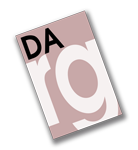La regulación de la inteligencia artificial en Europa a través de la técnica armonizadora del nuevo enfoque. (RI §426000)

The regulation of artificial intelligence in Europe through the new approach technique -
Vicente Álvarez García y Jesús Tahiri Moreno
El presente artículo tiene por objeto el análisis de la futura regulación de la inteligencia artificial en la Unión Europea desde la perspectiva del Derecho de la técnica, partiendo de la idea de que este tipo de software se diferencia de manera muy sustancial de los productos físicos, que son los que hemos estado tradicionalmente acostumbrados a regular a través de la técnica del nuevo enfoque armonizador.
En este contexto, los autores exponen en la primera parte del trabajo las bases jurídicas aplicables a esta nueva tecnología, que a menudo se caracteriza como el principal motor de la cuarta revolución industrial; para pasar, a continuación, al desglose tanto del concepto de inteligencia artificial como del sistema de riesgos previstos por el proyecto de Reglamento presentado por la Comisión en abril del año 2021.
El grueso del artículo se centra, no obstante, en el estudio pormenorizado de las técnicas regulatorias que afectarán a los sistemas de inteligencia artificial calificados como de alto riesgo; y, muy en particular, a la elaboración de estándares técnicos, por un lado, y a los controles existentes para su aplicación, por otro.
Desde la primera de estas perspectivas (esto es, la normalizadora), se estudia el papel que están llamadas a jugar en relación con esta tecnología tanto las normas técnicas armonizadas elaboradas por los organismos europeos de normalización como las especificaciones comunes generadas por la Comisión Europea.
Con respecto a la segunda modalidad regulatoria (es decir, la relativa a los controles técnicos), y tras efectuar un repaso general de los mismos, se advierte del peligroso déficit existente de mecanismos de control por una tercera parte neutral e independiente en el proyecto de Reglamento, permitiéndose a los proveedores la autocertificación de un tipo de sistemas de inteligencia artificial caracterizados por su potencial peligro para la sociedad actual.
I. PLANTEAMIENTO GENERAL. II. LAS BASES JURÍDICAS PARA UNA REGULACIÓN DE LA INTELIGENCIA ARTIFICIAL EN LA UNIÓN EUROPEA. III. EL CONCEPTO JURÍDICO DE INTELIGENCIA ARTIFICIAL EN LA EUROPA COMUNITARIA. 1. Una breve aproximación al concepto jurídico de inteligencia artificial en la Unión Europea. 2. Las ventajas y los riesgos de la inteligencia artificial. IV. EL ENFOQUE REGULATORIO EUROPEO: EL SISTEMA DE RIESGOS. 1. Introducción a la tipología de potenciales riesgos derivados del uso de los sistemas de inteligencia artificial. 2. Los sistemas de inteligencia artificial de riesgo inaceptable. 3. Los sistemas de inteligencia artificial de alto riesgo. 4. Los sistemas de inteligencia artificial de bajo riesgo. V. LA TÉCNICA REGULATORIA DE LOS SISTEMAS DE INTELIGENCIA ARTIFICIAL DE ALTO RIESGO. 1. Los elementos básicos de la técnica armonizadora del nuevo enfoque. 2. Los requisitos esenciales que deben respetar los sistemas de inteligencia artificial de alto riesgo. 3. Un esquema de las especificaciones técnicas que posibilitan el cumplimiento de los requisitos esenciales obligatorios impuestos a los sistemas de inteligencia artificial de alto riesgo.VI. EL PAPEL DE LAS NORMAS TÉCNICAS ARMONIZADAS EN EL ÁMBITO DE LA INTELIGENCIA ARTIFICIAL. 1. Introducción a la normalización en el campo de la inteligencia artificial. 2. La regulación de las normas técnicas armonizadas europeas. 3. Los resultados del trabajo de normalización en inteligencia artificial. VII. LAS ESPECIFICACIONES COMUNES. VIII. LOS CONTROLES TÉCNICOS DESTINADOS A ACREDITAR EL CUMPLIMIENTO DE LOS REQUISITOS OBLIGATORIOS POR LOS SISTEMAS DE INTELIGENCIA ARTIFICIAL DE ALTO RIESGO. 1. Introducción a los controles técnicos y a su tipología. 2. Los controles técnicos previos a la introducción en el mercado europeo de los sistemas de inteligencia artificial de alto riesgo. 3. Los controles ex post a la comercialización de los sistemas de inteligencia artificial de alto riesgo.
The aim of this paper is to analyze the future regulation of artificial intelligence in the European Union from the perspective of technical law, starting from the idea that this type of software differs very substantially from physical products, which are the ones we have traditionally been used to regulate through the technique of the new harmonizing approach.
In this context, the authors set out in the first part of the paper the legal bases applicable to this new technology, which is often characterized as the main driver of the fourth industrial revolution; to move on, then, to the breakdown of both the concept of artificial intelligence and the system of risks envisaged by the draft Regulation presented by the Commission in April 2021.
The bulk of the article focuses, however, on the detailed study of the regulatory techniques that will affect artificial intelligence systems classified as high-risk; and, very particularly, on the development of technical standards, on the one hand, and on the existing controls for their application, on the other.
From the first of these perspectives (i.e. standardization), the role, that both the harmonized technical standards drawn up by the European standardization bodies and the common specifications generated by the European Commission are called upon to play in relation to this technology, is studied.
With regard to the second regulatory modality (i.e. technical controls), and after a general review of the same, it warns of the dangerous lack of control mechanisms by a neutral and independent third party in the draft Regulation, allowing suppliers to self-certify a type of artificial intelligence systems characterized by their potential danger for today's society.
